Revelation 21 - 22

RevelationSteve Gregg
In this text, Steve Gregg discusses Revelation 21-22 and the idea of a new heaven and earth. Gregg notes that the descent of the New Jerusalem and the descent of the Lamb's wife are likely connected to the meeting of the church and Christ at his second coming. The city is depicted as having twelve foundations, each associated with one of the twelve apostles, and it calls to mind the Holy Holies, God's dwelling place among men. Gregg also touches on the idea of renewal and the removal of impurities, as well as the importance of righteous and holy living.
More from Revelation
18 of 19

Revelation 20
Revelation
Steve Gregg provides an interpretation of Revelation chapter 20, which is considered a controversial chapter in the Bible. Gregg discusses the represe
Series by Steve Gregg
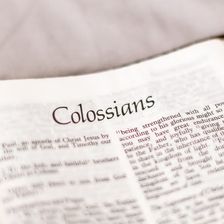
Colossians
In this 8-part series from Steve Gregg, listeners are taken on an insightful journey through the book of Colossians, exploring themes of transformatio
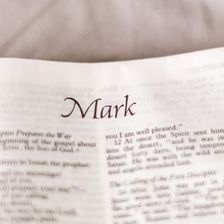
Gospel of Mark
Steve Gregg teaches verse by verse through the Gospel of Mark.
The Narrow Path is the radio and internet ministry of Steve Gregg, a servant Bible tea
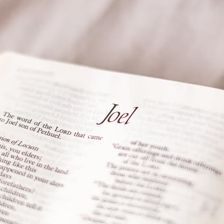
Joel
Steve Gregg provides a thought-provoking analysis of the book of Joel, exploring themes of judgment, restoration, and the role of the Holy Spirit.

Content of the Gospel
"Content of the Gospel" by Steve Gregg is a comprehensive exploration of the transformative nature of the Gospel, emphasizing the importance of repent

Leviticus
In this 12-part series, Steve Gregg provides insightful analysis of the book of Leviticus, exploring its various laws and regulations and offering spi
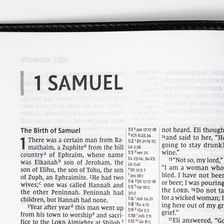
1 Samuel
In this 15-part series, Steve Gregg teaches verse by verse through the biblical book of 1 Samuel, examining the story of David's journey to becoming k

Cultivating Christian Character
Steve Gregg's lecture series focuses on cultivating holiness and Christian character, emphasizing the need to have God's character and to walk in the
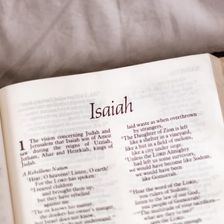
Isaiah
A thorough analysis of the book of Isaiah by Steve Gregg, covering various themes like prophecy, eschatology, and the servant songs, providing insight
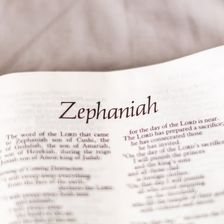
Zephaniah
Experience the prophetic words of Zephaniah, written in 612 B.C., as Steve Gregg vividly brings to life the impending judgement, destruction, and hope
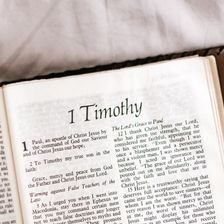
1 Timothy
In this 8-part series, Steve Gregg provides in-depth teachings, insights, and practical advice on the book of 1 Timothy, covering topics such as the r
More on OpenTheo

Did God Create Us So He Wouldn’t Be Alone?
#STRask
November 3, 2025
Questions about whether God created us so he wouldn’t be alone, what he had before us, and a comparison between the Muslim view of God and the Christi

How Do I Reconcile the Image of God as Judge with His Love, Grace, and Kindness?
#STRask
October 20, 2025
Questions about how to reconcile the image of God as a judge with his love, grace, and kindness, why our sins are considered to be sins against God, a

Why Does the Bible Teach You How to Be a Proper Slave Owner?
#STRask
November 13, 2025
Question about why it seems like the Bible teaches you how to be a proper slave owner rather than than saying, “Stop it. Give them freedom.”
* It s

Are You Accursed If You Tithe?
#STRask
December 15, 2025
Questions about whether anyone who tithes is not a Christian and is accursed since Paul says that if you obey one part of the Mosaic Law you’re obliga

The Historical Reliability of the Gospels: Licona vs. Ehrman - Part 2
Risen Jesus
September 10, 2025
In this episode, frequent debate opponents Dr. Michael Licona and Dr. Bart Ehrman face off on the historical reliability of the gospels. Held in 2018

How Can I Explain Modesty to My Daughter?
#STRask
November 27, 2025
Questions about how to explain modesty to a nine-year-old in a way that won’t cause shame about her body, and when and how to tell a child about a pre

How Do These Passages Fit with Your View on How God Speaks?
#STRask
September 15, 2025
Questions about why, if it’s impossible to miss God’s voice, the disciples incorrectly told Paul “through the Spirit” not to go to Jerusalem, people m

Faith Journeys: Similar Road, Different Conclusions - A Licona Ehrman Discussion
Risen Jesus
September 24, 2025
On the Risen Jesus podcast today, Dr. Michael Licona and Dr. Bart Ehrman join Justin Brierly on his Unbelievable podcast to discuss their faith journe

Should I Pray for Protection for Persecuted Christians When God Might Want Them to Be Martyrs?
#STRask
September 4, 2025
Questions about how to pray for persecuted Christians in light of the fact that God wills that some will be martyrs, and how persecuted Christians who

Is 1 Corinthians 12:3 a Black-and-White Tool for Discernment?
#STRask
October 27, 2025
Questions about whether the claim in 1 Corinthians that “no one can say ‘Jesus is Lord’ except in the Holy Spirit” is a black-and-white tool for disce

Should You Believe Things You Can’t Fully Comprehend?
#STRask
September 25, 2025
Questions about whether you should believe things you can’t fully comprehend, whether it’s just an arbitrary escape hatch to say God doesn’t require a

How Does It Affect You If a Gay Couple Gets Married or a Woman Has an Abortion?
#STRask
October 16, 2025
Questions about how to respond to someone who asks, ”How does it affect you if a gay couple gets married, or a woman makes a decision about her reprod

When I Can’t Stop Thinking About Something, Is That God Speaking?
#STRask
December 1, 2025
Questions about whether having a recurring thought is an indication God is speaking to you, what to say to someone who says they sinned because “God t

Since Most People Are Wrong When They Make Supernatural Claims, Why Didn't God Do Better?
Risen Jesus
September 17, 2025
Dr. Matthew McCormick, a philosophy professor at California State University, Sacramento, doesn’t believe that there is satisfactory historical eviden
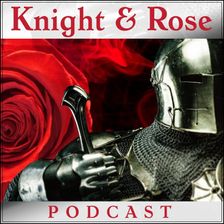
Corey Miller: The Progressive Miseducation of America
Knight & Rose Show
September 27, 2025
Wintery Knight and Desert Rose welcome Dr. Corey Miller to discuss The Progressive Miseducation of America. They examine how universities promote scie
